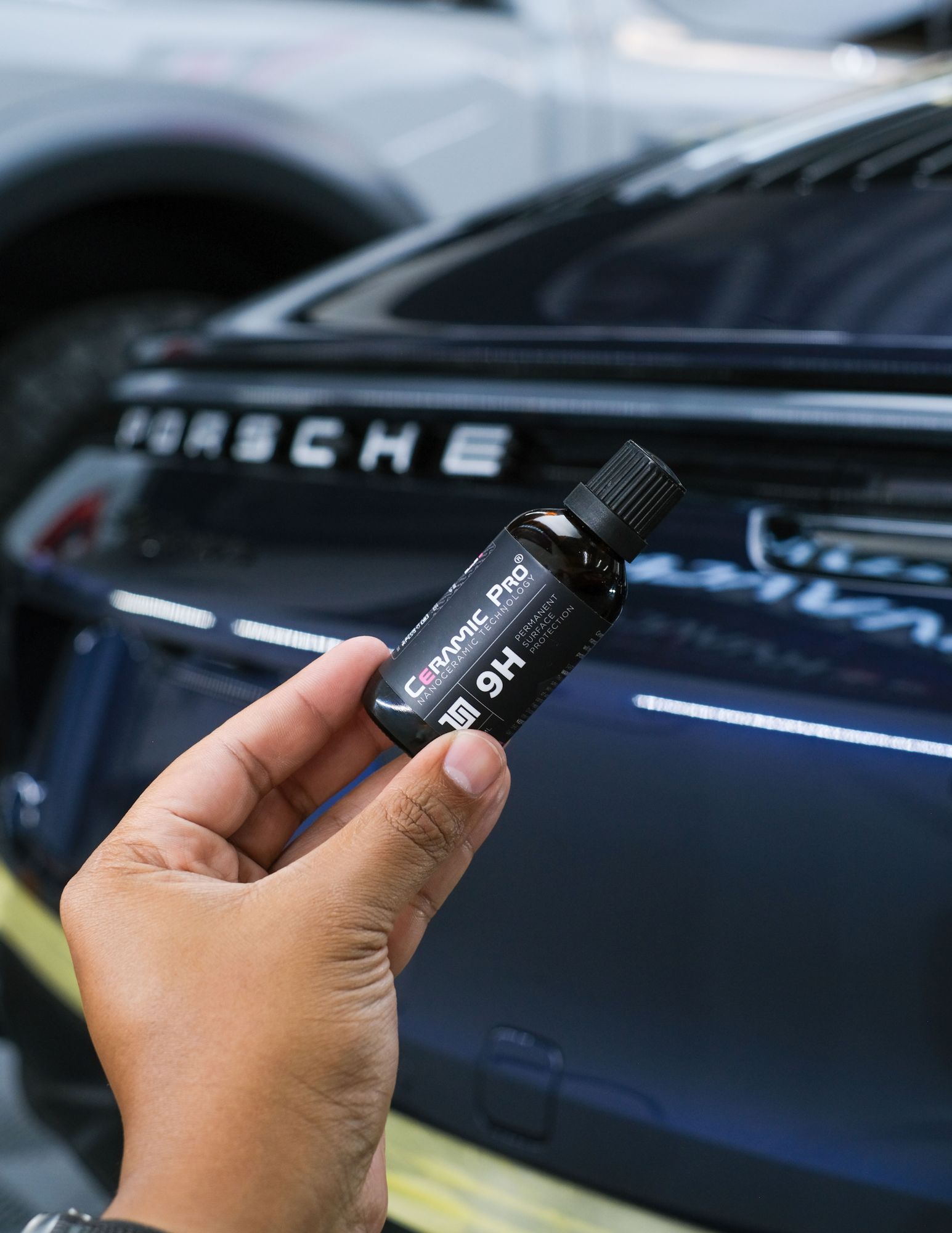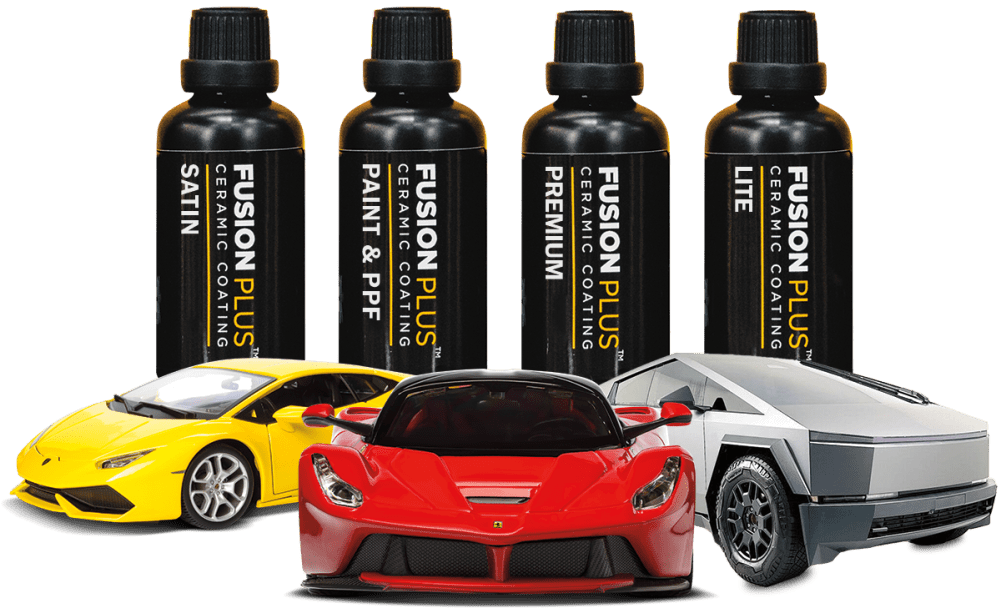Ceramic Coating for Cars: The Ultimate Solution for a Glossy Finish
Ceramic Coating vs. Typical Wax: Which Provides Much Better Long-Term Protection?
The argument in between ceramic layers and typical wax for car defense has garnered substantial focus amongst automotive lovers and professionals alike. Ceramic finishings flaunt premium longevity and resistance to environmental aspects, yet the complexity of their application elevates inquiries about availability and usefulness.
Summary of Ceramic Finishing
Ceramic finishing has acquired considerable popularity among automotive enthusiasts and detailers alike due to its advanced protective top qualities. This ingenious technology is developed to create a resilient, hydrophobic guard over a vehicle's paint surface area, significantly enhancing its resistance to environmental contaminants such as dirt, UV rays, and chemical spots. Unlike conventional wax, which provides a temporary layer of security, ceramic layers bond at a molecular degree with the paint, offering resilient durability-- usually extending past two years with correct maintenance.
The application process entails thorough preparation of the car's surface area, consisting of cleansing and brightening to make sure optimum bond. As soon as used, the covering remedies to form a robust layer that not just includes deepness and gloss to the paint however likewise simplifies maintenance. With its hydrophobic homes, ceramic coating permits water and dust to move off even more conveniently, reducing the regularity of laundries and reducing the threat of swirl marks.
Furthermore, ceramic coatings are offered in numerous formulas, enabling users to choose items customized to their certain demands and preferences. In general, ceramic coating stands for a significant innovation in paint defense innovation, delivering remarkable efficiency compared to conventional options.
Summary of Typical Wax
Commonly pertained to as a staple in automotive treatment, wax works as a prominent choice for those looking for a straightforward method to enhance and safeguard their lorry's paint - ceramic coating. Automotive wax usually makes up all-natural components, such as carnauba, or synthetic compounds, made to create a safety layer externally of the paint. This layer not only boosts the lorry's gloss and shine but likewise offers an obstacle against ecological impurities
The application of wax is usually straightforward, making it obtainable for both professionals and DIY enthusiasts. It can be applied by hand or machine, enabling for versatility in the describing process. As soon as used, wax requires a curing period, after which it solidifies to create a safety covering. Wax is also recognized for its capability to repel water, promoting a beading result that helps in the prevention of water areas and rust.
Nonetheless, while wax works for improving the aesthetic charm of an automobile, it is vital to keep in mind that the protection it offers may demand a lot more regular reapplication contrasted to alternate items, such as ceramic finishings. Generally, typical wax remains a favored option for those focusing on simplicity of use and immediate aesthetic renovation.
Resilience and Long Life Comparison
While both ceramic layers and traditional wax offer safety benefits for auto paint, their toughness and longevity differ considerably. Conventional wax, usually made from natural carnauba or synthetic polymers, generally provides a protective layer that lasts roughly three to six months. This reasonably brief life-span demands regular reapplication to keep optimum defense.
On the other hand, ceramic coverings are engineered from innovative nanotechnology, creating a covalent bond with the paint surface. This leads to a robust, hydrophobic layer that can sustain for two to five years, depending on the product and ecological conditions. The exceptional toughness of ceramic layers is credited to their chemical structure, which provides enhanced resistance to scratches, UV rays, and oxidation.

Defense Against Environmental Aspects
Protecting a vehicle's paint from ecological aspects is important for keeping its look and worth over time. Cars are constantly subjected to a range of aspects, including UV rays, bird droppings, tree sap, acid see this here rainfall, and road gunk, every one of which can endanger the stability of the paintwork.
Ceramic finishes provide a robust protection against these ecological assailants. Unlike standard wax, which can deteriorate promptly under UV exposure, ceramic finishes create a long lasting, hydrophobic layer that withstands the hazardous impacts of sunshine and environmental pollutants. This innovative modern technology produces a chemical bond with the car's surface, providing superior security that lasts for several years, also in severe conditions.
In comparison, ceramic coverings keep their safety high qualities much longer, dramatically reducing the danger of paint damages and making sure that the lorry preserves its aesthetic allure. As a result, ceramic layers are significantly acknowledged as the remarkable option for long-term protection against environmental elements.
Application and Upkeep Differences
The methods of application and subsequent maintenance for ceramic layers and typical wax vary dramatically, influencing the overall customer experience and efficiency of each item. Ceramic coverings require a more intricate application procedure, generally involving surface preparation that includes washing, sanitizing, and brightening the car. As soon as the surface area prepares, the ceramic finishing is used in a regulated environment, commonly requiring specialist competence to make certain appropriate curing and bonding to the paint.

While both products improve lorry look, the longer-lasting defense provided by ceramic coverings might warrant their first investment, regardless of the even more requiring application procedure. On the other hand, standard wax continues to be a popular choice for those seeking a less complex, albeit short-term, remedy.

Verdict
In final thought, ceramic finishes demonstrate substantial benefits over standard wax in regards to toughness and environmental management. With a life expectancy prolonging 2 to five years and exceptional resistance to UV rays, dust, and chemical spots, ceramic layers provide an extra efficient remedy for long-term automobile upkeep. The application process might call for professional know-how, the resulting cost financial savings and reduced frequency of reapplication highlight the worth of ceramic coatings for those seeking optimal lorry defense.
The discussion between ceramic coatings and standard wax for car defense has actually garnered considerable focus amongst automobile enthusiasts and specialists alike. Unlike traditional wax, which gives a short-term layer of security, ceramic finishings bond at a molecular degree with the paint, providing long-lasting resilience-- commonly expanding beyond two years with proper upkeep.
While both ceramic coverings and typical wax offer safety advantages for auto paint, their toughness and longevity vary considerably. For car fanatics looking for lasting defense, ceramic coatings offer a compelling advantage over traditional wax items.
In final thought, ceramic coverings demonstrate substantial advantages over traditional wax in terms of longevity and ecological security.